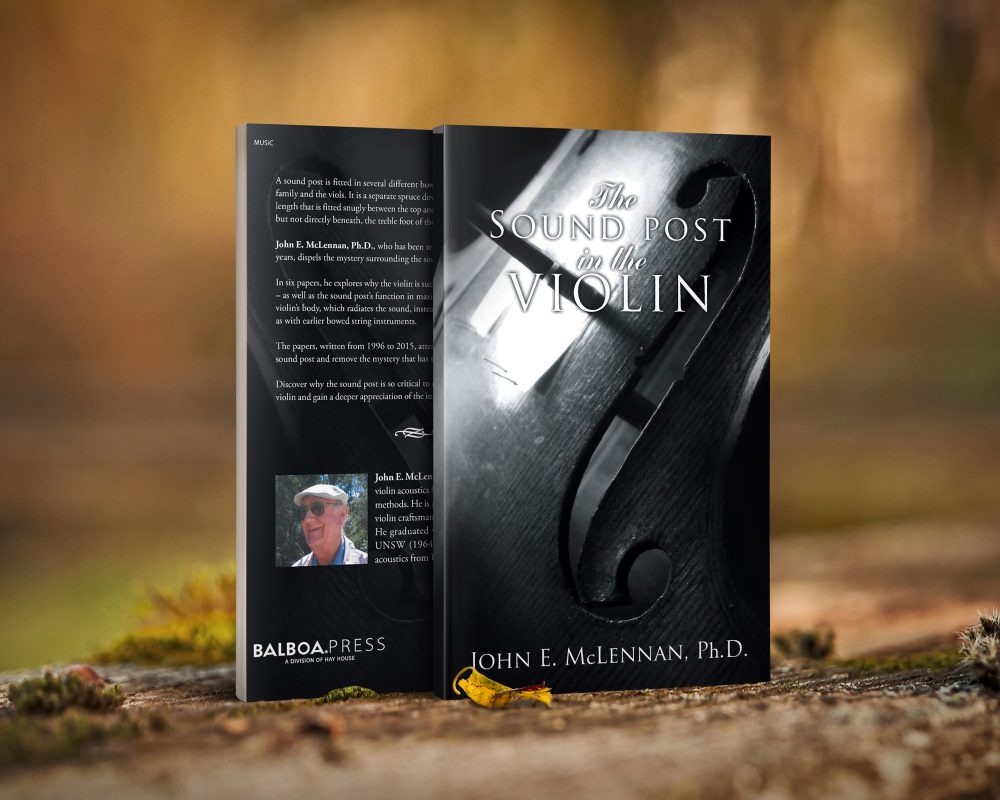There’s nothing more beautiful for anyone who aspires to learn how to play the violin and get some insights that will help them play marvelously.
The Sound Post in the Violin shares the technicalities and the history of the violin instrument like a boss. Its advice and the many ways that rookie violin players and even those who are masters of it already, can gain a lot of insights from John E. McLennan is enriching and thought-provoking. It could be that some of what they will learn here might be new to them and as they apply how to use it on their performance it can greatly influence them.
The graphics are also very helpful. It shows how we should play the sound post in the violin with technicality and careful consideration of our body movements and breathing techniques. There is so much to learn from this book and anyone who will read it will enjoy and gain a better understanding of how wonderful the sound post in the violin can enhance performance if done correctly.
John, your book is phenomenal! The Sound Post in the Violin is very informative and shares a very interesting discussion about sound, frequency, body positioning, and its impact on a player’s overall performance. Tell us, what made you write about this topic?
The uncertainty existing about the effect of the position of the soundpost on the quality of the sound produced by the violin. The original direction was to place the soundpost behind the treble foot of the bridge. The latest results, shown in the book, confirm the finding that this position was very sensitive; a few mm to the right or left made a big difference to the quality of the sound produced. Human judgment, in the past, depended on the player made decisions very uncertain.
What got you interested in violin and writing about its technicalities?
My lifelong fascination with the sounds produced and having a science background, I was able to make some experimental studies.
Tell us about yourself, your passion, and other interests.
Born in 1925, I was brought up during the depression years of the nineteen-thirties. I was passionate about all human activity especially sport although I did not excel in any team games. I engaged in bushwalking which enabled me to contact the unspoiled parts of Australia.
It has been said in your book that the violin is “The Soul of the Instrument”. Kindly elaborate on this and tell us why you believe it to be.
The soundpost was regarded as the “soul of the violin” because when its position was favorable, it brought the whole body of the violin into play.
What do you think is the best way to play the violin? Share your tips on how a player can perform with the best sound and moving performance.
Playing the violin is a “whole body” experience; it allows the violinist to communicate the finest emotions to the listener. The player has to go beyond the technicalities to convey human feelings.
Your book is very helpful to aspiring violin players, and to those who have an interest in the violin and how to play it. Do you believe that those who consider themselves already a master violin player will also be interested to learn from this book? If so, tell us why or why not.
The book is not telling the player how to play the violin but it puts it in a condition that maximizes its capabilities.
How long have you been studying the technicalities of violin? Do you play professionally?
I have studied the violin experimentally for 30 years but I am not a player, professionally or otherwise.
Who is your favorite violin player and share with us why?
Fritz Kreisler would be my favorite violinist for the human element he has in his playing.
What is the best information that you had shared on this book that aspiring violinists should be mindful of?
To have the soundpost correctly set and placed outside the treble foot of the bridge. In explanation, the traditional approach was to move the soundpost a few mm from the standard position, with the aid of the player, to find the position that satisfied the player’s judgment. The fit against the top and back is critical. Variation probably accounts for the experimental scatter. Since the top is uniform in thickness, the outside slope can be used. The back is not usually as arched. Since the exact position outside the foot of the bridge is not critical, a good fit is likely to be obtained.
This book is now available in Amazon and Barnes & Noble.
Buy your own copy now!

I am sure this post has touched all the internet viewers, its really really pleasant post on building up new weblog.